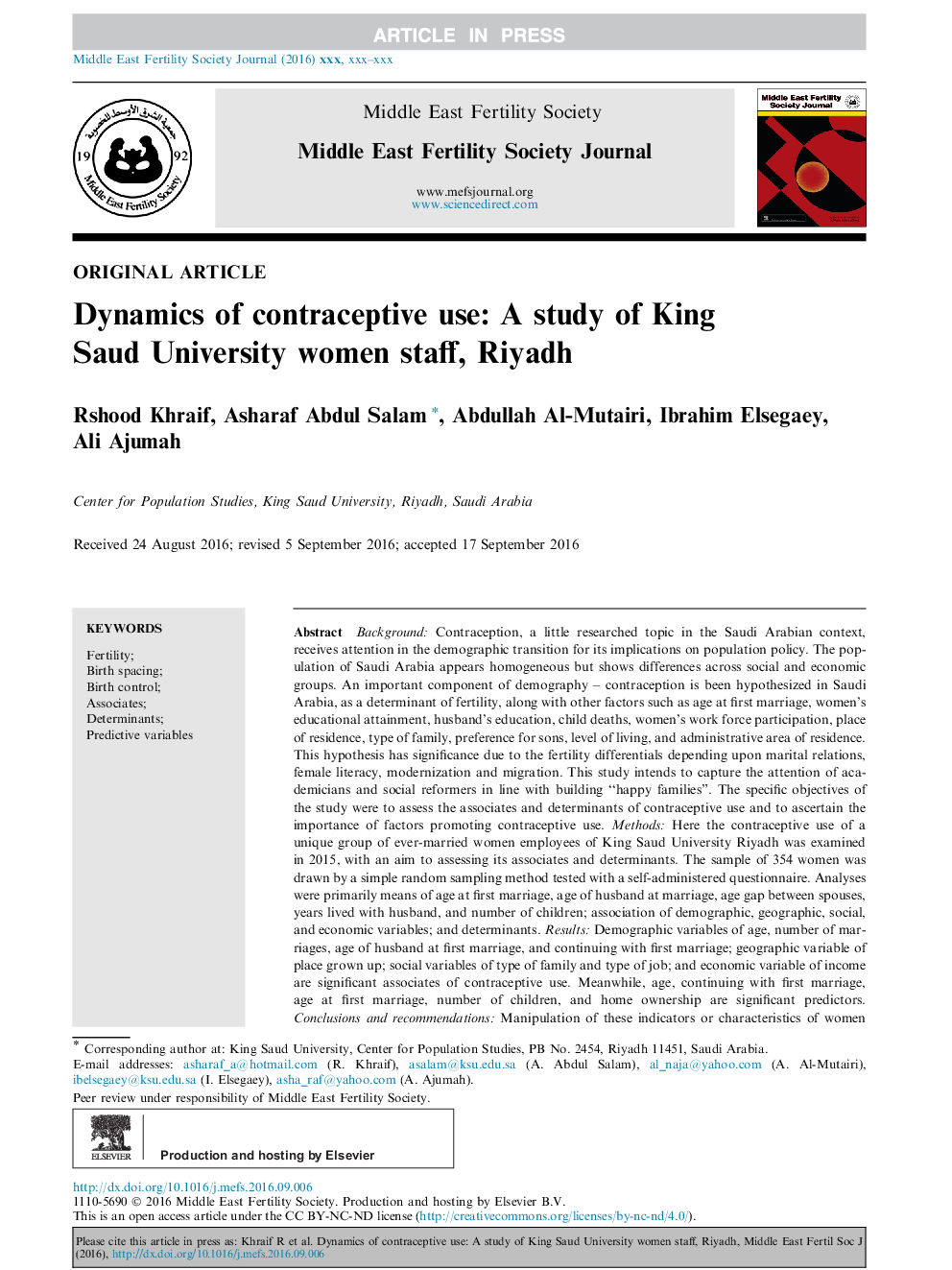| Article ID | Journal | Published Year | Pages | File Type |
|---|---|---|---|---|
| 8783321 | Middle East Fertility Society Journal | 2017 | 9 Pages |
Abstract
Background: Contraception, a little researched topic in the Saudi Arabian context, receives attention in the demographic transition for its implications on population policy. The population of Saudi Arabia appears homogeneous but shows differences across social and economic groups. An important component of demography - contraception is been hypothesized in Saudi Arabia, as a determinant of fertility, along with other factors such as age at first marriage, women's educational attainment, husband's education, child deaths, women's work force participation, place of residence, type of family, preference for sons, level of living, and administrative area of residence. This hypothesis has significance due to the fertility differentials depending upon marital relations, female literacy, modernization and migration. This study intends to capture the attention of academicians and social reformers in line with building “happy families”. The specific objectives of the study were to assess the associates and determinants of contraceptive use and to ascertain the importance of factors promoting contraceptive use. Methods: Here the contraceptive use of a unique group of ever-married women employees of King Saud University Riyadh was examined in 2015, with an aim to assessing its associates and determinants. The sample of 354 women was drawn by a simple random sampling method tested with a self-administered questionnaire. Analyses were primarily means of age at first marriage, age of husband at marriage, age gap between spouses, years lived with husband, and number of children; association of demographic, geographic, social, and economic variables; and determinants. Results: Demographic variables of age, number of marriages, age of husband at first marriage, and continuing with first marriage; geographic variable of place grown up; social variables of type of family and type of job; and economic variable of income are significant associates of contraceptive use. Meanwhile, age, continuing with first marriage, age at first marriage, number of children, and home ownership are significant predictors. Conclusions and recommendations: Manipulation of these indicators or characteristics of women facilitate the demographic scenario desired by the Kingdom or conceptualized in the population policy.
Related Topics
Health Sciences
Medicine and Dentistry
Obstetrics, Gynecology and Women's Health
Authors
Rshood Khraif, Asharaf Abdul Salam, Abdullah Al-Mutairi, Ibrahim Elsegaey, Ali Ajumah,
